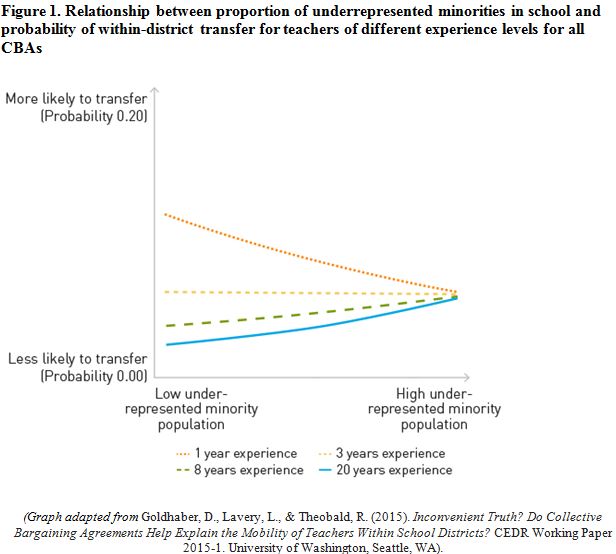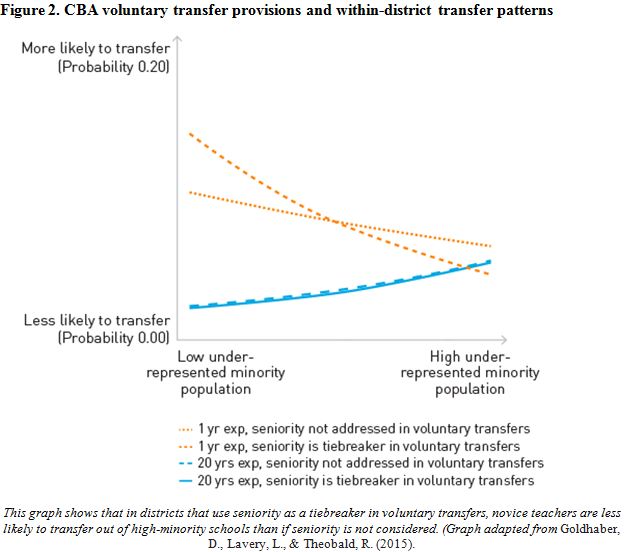People have offered many reasons for the inequitable distribution of teacher talent and experience across schools:salary, the desirability of the locale, recruitment, the student teacher pipeline, to name some. A new study that has gotten a lot of attention from the Center for Education Data & Research by Dan Goldhaber, Lesley Lavery and Roddy Theobald adds to the log pile: the seniority rules spelled out in collective bargaining agreements.
The central question: are teachers (especially experienced ones) more likely to leave high-minority schools if the district’s collective bargaining agreement (CBA) has strong seniority protections? Districts generally pick one of four options for the role of seniority in transfer decisions: 1) prohibiting it from being used, 2) allowing it as one of several factors to consider, 3) letting it serve as a tiebreaker and 4) making it the only factor that can be considered.
Tracking some 60,000 teachers’ transfers, Goldhaber et al. find what we’re used to seeing, that more teachers transfer out of high-minority schools and it’s the teachers with more seniority who are most likely to leave those schools (see Figure 1).

But then new ground gets plowed. Contracts specifying that seniority must be the tiebreaker make the pattern illustrated in the graph all the more pronounced. Novice teachers are more likely to transfer out of low-minority schools and even less likely to transfer out of those with large populations of minority students (see Figure 2). In other words, factoring in seniority means that novice teachers have less leverage to transfer out of high-minority schools.
For voluntary transfers (those requested by a teacher), novice teachers are 50 percent more likely to transfer out of those schools with large proportions of minority students, all else equal, if they teach in a district that does not address seniority than if it is a tiebreaker. We see a similar pattern for teachers who are involuntarily transferred out of their schools.

Some possible solutions? Obviously, districts can work to remove seniority as a factor from transfer decisions and instead base decisions on merit and fit for the position, rather than only years of service. Or, some districts have implemented an interview process to help with matching teachers to schools during the transfer process. Finally, in order to incentivize senior teachers to stay in disadvantaged schools, districts can also offer leadership positions or other rewards to those teachers.
To learn more about how seniority factors into district policies, see NCTQ’s Teacher Trendline on the topic and take a look at the school districts in your state in our Teacher Contract Database.

